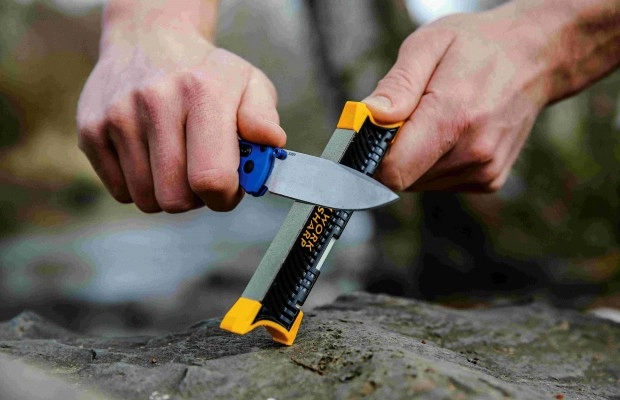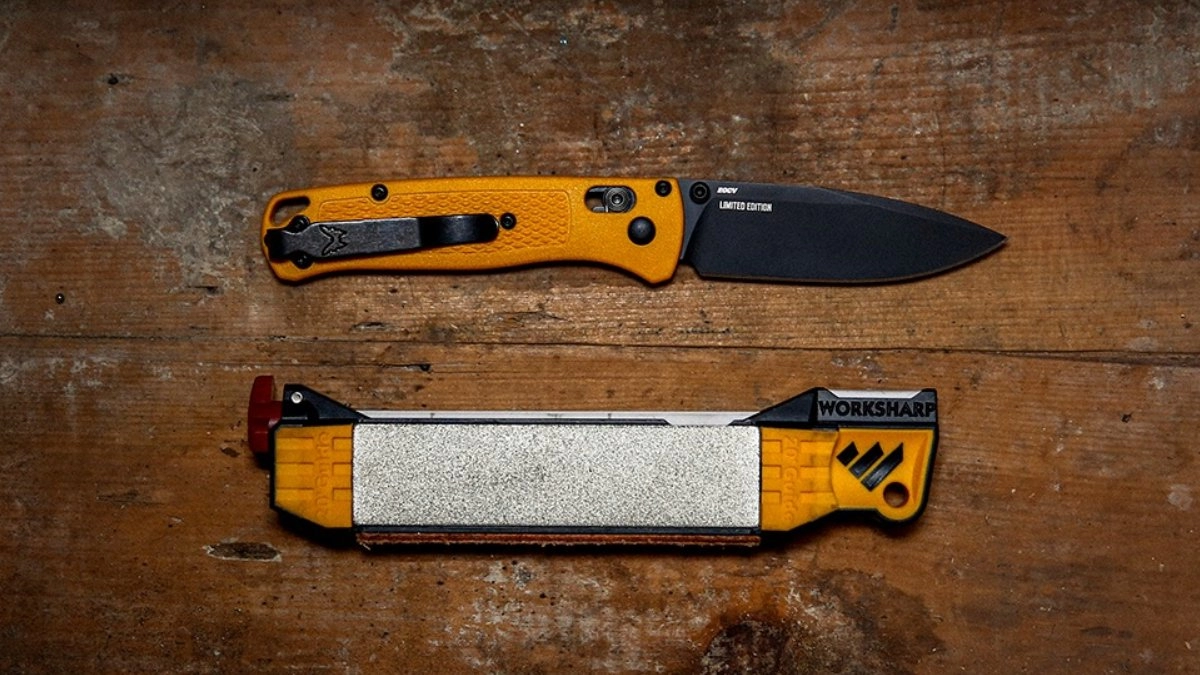In this article, we will delve into the art of sharpening a pocket knife. Pocket knives are versatile tools that can be used for various purposes, such as camping, cooking, and everyday tasks. However, a dull pocket knife can hinder its effectiveness and make it frustrating to use. By learning the proper techniques to sharpen your pocket knife, you can ensure it remains razor-sharp and ready for any challenge. So, grab your pocket knife, and let's get started! The Importance of Sharpening: Mastering Pocket Knife Sharpening Before we dive into the sharpening process, let's discuss why it is essential to keep your pocket knife sharp. A sharp knife not only enhances its cutting performance but also improves safety. Dull knives require more force to cut, increasing the risk of slips and accidents. A sharp pocket knife, on the other hand, allows for precise and controlled cutting, minimizing the chances of injuries. Additionally, a well-maintained knife will have a longer lifespan, saving you money in the long run. Sharpening a pocket knife is important to make it work well and last longer. There are different methods you can use to sharpen your pocket knife. Here are a few common ones: Whetstone: Rub the knife blade against a stone at a certain angle. This removes dullness and brings back a sharp edge. Start with a rough side of the stone and then use a smoother side for a polished finish. Honing Rod: Use a long, cylindrical rod made of ceramic or steel. Run the knife blade along the rod at a consistent angle to realign the edge and remove small imperfections. Sharpening System: These tools give you control over the sharpening process. They have guides or slots with different roughness levels, so you can sharpen the knife at a consistent angle. Sharpening systems work well for beginners and experienced users. Electric Knife Sharpener: These motorized devices have grinding wheels or belts. They quickly and efficiently sharpen the knife, which is great if you want convenience. Just be careful not to remove too much metal, as it can shorten the knife's lifespan. Lansky-style Sharpening: This method uses adjustable angle guides and diamond hones. It helps you maintain a consistent angle while sharpening, resulting in a sharp and even edge on your pocket knife. Remember to follow the instructions and be safe when sharpening your pocket knife. Regular maintenance and sharpening will improve its cutting performance and make it last longer. To sharpen your pocket knife effectively, you will need a few essential tools. Here's a list of items you should gather before starting the sharpening process: Whetstone or sharpening stone: A whetstone is a traditional sharpening tool with a coarse and fine-grit side, allowing you to adjust the level of sharpness. Lubricating oil or water: Lubricant is necessary to prevent excessive friction during sharpening and to remove metal particles. Honing guide (optional): A honing guide helps maintain a consistent sharpening angle, especially for beginners. Strop or leather belt: A strop is used to refine the edge after sharpening, enhancing its smoothness and keenness. Now that you have gathered the necessary tools, let's walk through the step-by-step process of sharpening your pocket knife: Before you begin sharpening, soak the whetstone in water for about 10 to 15 minutes. This will prevent the stone from drying out and ensure better sharpening results. If you are using an oil stone, apply a few drops of lubricating oil instead. The sharpening angle is crucial for achieving a sharp edge on your pocket knife. Most pocket knives have a bevel angle between 15 and 30 degrees. If you're unsure about the angle, check the manufacturer's recommendations or refer to the knife's original bevel. Hold the knife firmly and place it on the whetstone at the desired sharpening angle. Using moderate pressure, move the blade across the stone in a sweeping motion, maintaining a consistent angle. Start from the knife's base and work your way toward the tip, ensuring the entire cutting edge is sharpened evenly. Repeat this process on both sides of the blade, alternating the strokes. Once you've established a satisfactory edge on the coarse grit side, switch to the fine grit side of the whetstone. Follow the same sweeping motion, maintaining the sharpening angle. The fine grit will help refine the edge, removing any remaining burrs or imperfections from the coarse grit sharpening. Repeat this process on both sides of the blade, ensuring even sharpening. After sharpening, use a strop or leather belt to give your pocket knife a final touch. With the blade facing away from you, move the knife back and forth along the strop, ensuring the entire edge makes contact. This step helps remove any residual burrs and polishes the edge, resulting in a razor-sharp finish. To test the sharpness of your pocket knife, carefully run your finger across the blade's edge. Be cautious not to apply too much pressure. A sharp knife should effortlessly catch your finger, indicating a keen edge. If the blade slides without catching, additional sharpening may be required. Sharpening a pocket knife is a valuable skill that every knife owner should possess. By following the step-by-step guide provided in this article, you can ensure that your pocket knife remains sharp, safe, and effective. Remember to maintain the appropriate sharpening angle, use a combination of coarse and fine grits, and finish with a strop for optimal results. Regular maintenance and sharpening will keep your pocket knife ready for any cutting task that comes your way. Q1: How often should I sharpen my pocket knife? It depends on how frequently you use your knife and the tasks you perform with it. As a general rule of thumb, regular knife users should sharpen their blades every few months or whenever they notice a decrease in cutting performance. Q2: Can I use an electric sharpener for my pocket knife? While electric sharpeners offer convenience, they may remove excessive amounts of metal, reducing the lifespan of your pocket knife. Manual sharpening methods, such as using whetstones, provide better control and precision. Q3: What should I do if I don't have a whetstone? If you don't have a whetstone, you can use alternative sharpening tools such as diamond sharpening stones, ceramic rods, or even sandpaper. These options may require slightly different techniques but can still yield satisfactory results. Q4: How can I prevent accidents while sharpening my knife? To prevent accidents, ensure that you have a secure grip on the knife at all times. Additionally, make sure the knife's edge is facing away from your body while sharpening. Take your time and maintain a consistent sharpening angle to avoid slips. Q5: Can I sharpen serrated pocket knives using the same method? Sharpening serrated pocket knives requires specialized tools, such as tapered or round sharpening rods. These tools are designed to match the serration pattern, allowing you to maintain the knife's serrated edges effectively.
Different Ways to Sharpen a Pocket Knife

Essential Tools for Sharpening a Pocket Knife
Step-by-Step Guide: How to Sharpening a Pocket Knife
Step 1: Prepare the Whetstone
Step 2: Determine the Sharpening Angle
Step 3: Start with the Coarse Grit Side
Step 4: Progress to the Fine Grit Side
Step 5: Strop the Knife
Step 6: Test the Knife's Sharpness
Conclusion
FAQs (Frequently Asked Questions)